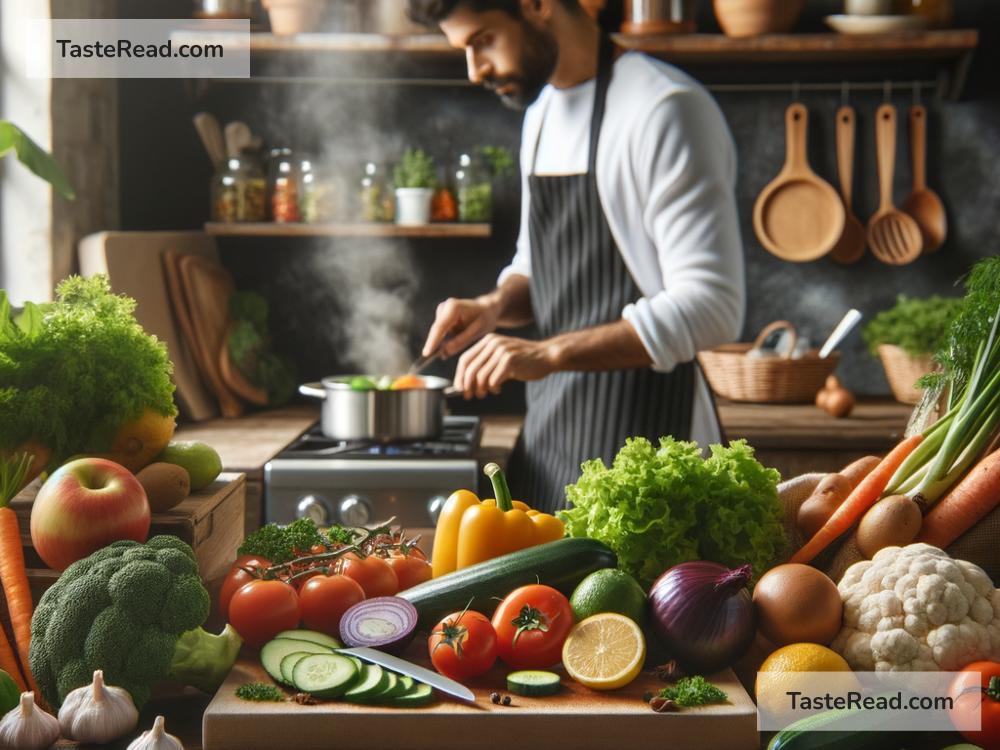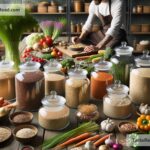Exploring the Benefits of Cooking with Seasonal Ingredients
Eating and cooking with seasonal ingredients is an idea as old as time. Before supermarkets and global food distribution, people relied on crops that were in season for their meals. Today, cooking seasonally is making a comeback and for good reason – it’s fresh, tasty, affordable, and better for the planet. Let’s dive into the benefits of seasonal cooking and discover why it’s a win-win for you and the world around you.
What Does “Cooking with Seasonal Ingredients” Mean?
Seasonal cooking means using fruits, vegetables, and other ingredients that grow naturally during a certain time of the year in your area. For example, in summer, you may find sweet berries, juicy tomatoes, and crisp cucumbers at their best. In winter, root vegetables like potatoes, carrots, and squash are often in season. Seasonal foods vary depending on where you live, and they’re usually grown locally, instead of imported.
Why Should You Cook with Seasonal Ingredients?
There are many benefits to using seasonal ingredients in your kitchen. Let’s explore some of the most important ones:
1. Better Taste and Freshness
Think of biting into a juicy strawberry picked straight from the plant versus eating a strawberry that’s traveled thousands of miles to reach the store. The local, in-season strawberry is fresher, sweeter, and full of flavor. That’s because seasonal fruits and vegetables are often harvested at their peak ripeness, giving dishes the best possible taste. When produce is in season, it’s naturally more delicious and needs fewer spices or additives to enhance the flavor.
2. Improved Nutrition
Seasonal foods don’t just taste better – they’re healthier too! Fruits and vegetables that are picked fresh from local farms tend to have higher nutritional value. During transportation over long distances, produce loses some of its nutrients. Seasonal items, on the other hand, don’t travel far, so they maintain their vitamins and minerals. For instance, freshly harvested kale or spinach in the winter is rich in iron and vitamin A, giving your body the nutrients it needs at that time of year.
3. Cost Savings
Have you ever noticed that strawberries are more affordable in the summer than in the winter? When fruits and vegetables are in season, they’re easier and cheaper to grow, meaning you get them at a lower price. When food has to travel from far-away places or be grown artificially, costs increase. Cooking with seasonal ingredients is a smart and budget-friendly choice for families looking to eat well without spending a fortune.
4. Supports Local Farmers
Seasonal cooking often means buying food grown in your area. When you shop at farmers’ markets or local grocery stores, you support farmers in your community. This helps the local economy and ensures that small farms can keep doing what they do best – growing fresh, high-quality food. Plus, buying local means you’re getting food that’s fresher and hasn’t been sitting on trucks or in storage for weeks.
5. Better for the Environment
Transporting food from one part of the world to another takes a lot of energy, leading to more pollution. On top of that, growing food out of season often involves artificial techniques like greenhouse farming and chemical treatments. Seasonal cooking, which relies on local ingredients, uses less fuel and fewer chemicals. By eating seasonal and local produce, you choose a more eco-friendly way to enjoy your meals.
6. A Connection to the Seasons
Cooking seasonally helps you feel more connected to nature and the changing seasons. Eating squash, pumpkin, and hearty soups in the fall feels comforting, while fresh salads and berries bring happiness during the summer. Seasonal ingredients can inspire you to try new recipes and enjoy the unique flavors of each part of the year.
How to Get Started with Seasonal Cooking
You don’t need to overhaul your entire diet to enjoy seasonal cooking. Start small with these easy tips:
-
Visit Farmers’ Markets: Local farmers often sell only what’s in season. They can even give you ideas about how to cook the fresh fruits and vegetables.
-
Learn What’s in Season: Research what’s seasonal in your area throughout the year. You can find charts online or check with local farms.
-
Plan Seasonal Recipes: Once you know what’s in season, plan meals using those ingredients. For example, make fresh tomato pasta in the summer or sweet potato soup in the winter.
-
Preserve Seasonal Foods: If you love summer berries but miss them in the winter, try freezing or preserving them so you can enjoy them year-round.
Seasonal Cooking Makes Every Meal Special
Cooking with seasonal ingredients isn’t just good for your taste buds – it’s also good for your health, wallet, community, and the environment. It connects you to nature and inspires you to try new recipes and flavors. Seasonal cooking turns ordinary meals into something truly special.
So why not give it a try? The next time you’re at the store or market, look for fruits and vegetables that are in season and local to your area. They’ll add a burst of freshness and joy to your kitchen. Celebrate every season by savoring the best it has to offer – one delicious bite at a time!


